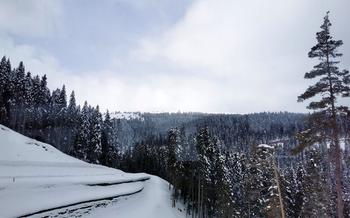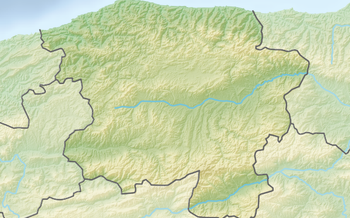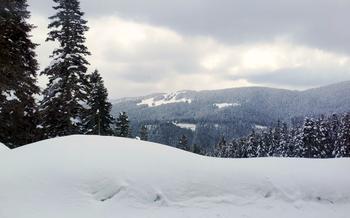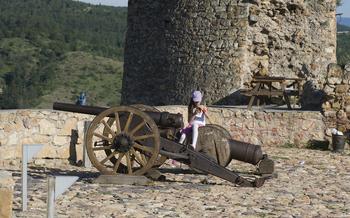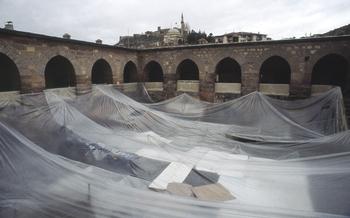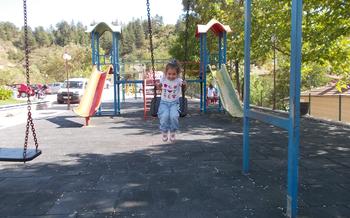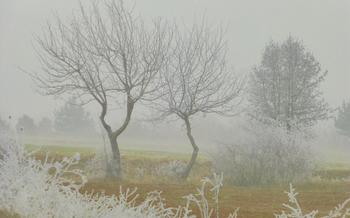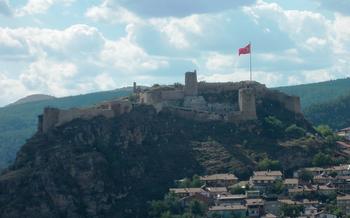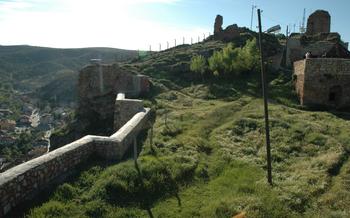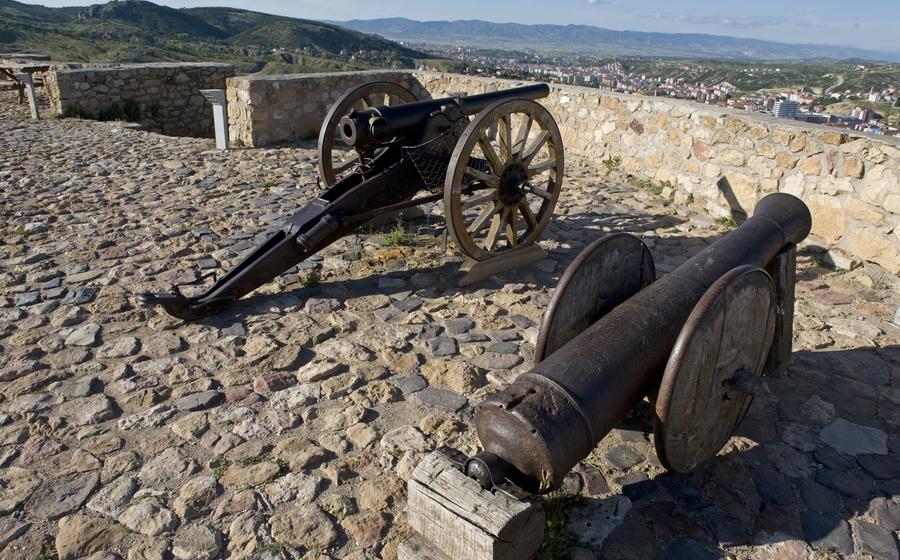
Kastamonu Tosya Rice Terraces
- Kastamonu Tosya Rice Terraces: A Breathtaking Sight
- Exploring the Terraces: A Scenic Adventure
- Cultural Heritage: A Tapestry of Traditions
- Agricultural Techniques: A Symphony of Skill
- Village Charm: A Touch of Authenticity
- Local Cuisine: A Feast for the Senses
- History and Legends: Unraveling the Past
- Wildlife Sanctuary: A Haven for Nature Lovers
- Sustainable Tourism: A Responsible Approach
- Off-the-Beaten-Path Adventures: Exploring Hidden Gems
- Festivals and Events: Celebrating Rice Culture
- Accommodation Options: Finding Your Home Away from Home
- Transportation and Accessibility: Getting There and Around
- Insider Tip: Unforgettable Sunsets
Kastamonu Tosya Rice Terraces: A Breathtaking Sight
In the heart of Turkey, nestled amidst the verdant landscapes of Kastamonu, lies a hidden gem that captivates the senses and invites exploration. The Kastamonu Tosya Rice Terraces, a tapestry of vibrant emerald hues cascading down the hillsides, offer a breathtaking spectacle that has earned them a reputation as one of Turkey's most captivating natural wonders.
The history of these rice terraces dates back centuries, with the earliest records suggesting their existence during the Ottoman Empire. Over time, these terraces have become an integral part of the region's agricultural heritage, providing sustenance to local communities and shaping the unique cultural traditions of Tosya.
The cultivation of rice in this region is a testament to the ingenuity and perseverance of local farmers. The terraces are meticulously carved into the slopes, creating a complex system of irrigation channels that ensures a steady supply of water to the crops. This unique agricultural practice, passed down through generations, has resulted in breathtaking landscapes that are as visually stunning as they are ecologically significant.
The village of Tosya, situated at the foot of these majestic terraces, exudes a charm that is both timeless and welcoming. The locals, known for their warm hospitality, are proud of their rice-growing heritage and eager to share their traditions and stories with visitors. Exploring the village markets, where fresh produce and handcrafted goods are displayed, offers a glimpse into the vibrant local culture and provides an opportunity to connect with the community.
Exploring the Terraces: A Scenic Adventure
The Kastamonu Tosya Rice Terraces offer a breathtaking spectacle throughout the year, but their beauty truly comes alive during the summer months. The emerald green hues of the rice paddies, contrasted against the backdrop of the surrounding mountains, create a mesmerizing panorama that is sure to captivate your senses.
For the best experience, plan your visit between June and September, when the rice plants are at their peak growth and the weather conditions are ideal for outdoor exploration. Hiking trails wind through the terraces, inviting you to embark on a scenic adventure amidst this natural masterpiece. As you ascend, panoramic vistas unfold before your eyes, revealing the intricate patterns formed by the cascading rice paddies.
Along the way, keep an eye out for wildlife. The terraces are home to a diverse range of bird species, including migratory birds that make the region a stopover during their seasonal journeys. With a bit of luck, you might spot herons, egrets, and even the majestic eagle soaring above the rice fields.
Cultural Heritage: A Tapestry of Traditions
The Kastamonu Tosya Rice Terraces are not just a visual spectacle but also a treasure trove of cultural heritage, deeply intertwined with the history and traditions of the region. Rice cultivation has shaped the way of life in Tosya for generations, leaving an indelible mark on its culture and traditions.
The significance of rice in the region's history cannot be overstated. For centuries, rice farming has been the backbone of the local economy, providing sustenance and livelihood to the people of Tosya. Traditional methods of rice farming, passed down through generations, are still practiced today, showcasing the resilience and continuity of agricultural knowledge.
The rich cultural heritage of Tosya is celebrated through various local festivals and events that revolve around the rice harvest. These festivals are a testament to the deep connection between the community and its rice-growing traditions. Visitors can immerse themselves in the vibrant atmosphere of these events, witnessing traditional music, dance, and other cultural performances that pay homage to the region's rice-growing heritage.
Agricultural Techniques: A Symphony of Skill
The Kastamonu Tosya Rice Terraces showcase a remarkable blend of agricultural expertise and sustainable farming practices. Farmers in the region have mastered the art of water management, utilizing a sophisticated irrigation system that ensures an adequate supply of water to each terrace. This system relies on natural water sources, such as streams and underground springs, and is carefully designed to prevent erosion and maintain soil moisture.
In addition to water management, farmers employ sustainable farming techniques that promote harmony with nature. They practice crop rotation to maintain soil fertility and prevent the buildup of pests and diseases. Organic fertilizers, such as manure and compost, are used to nourish the soil and minimize the use of chemical fertilizers.
The local farmers play a crucial role in preserving the agricultural heritage of the region. They have passed down traditional farming methods from generation to generation, ensuring the continuation of sustainable practices. Their dedication to preserving the rice terraces has resulted in a thriving agricultural landscape that not only provides sustenance but also contributes to the region's unique cultural identity.
Village Charm: A Touch of Authenticity
Nestled amidst the picturesque rice terraces, the village of Tosya exudes an atmosphere of tranquility and authenticity. As you wander through its narrow cobblestone streets, you'll be greeted by warm smiles and friendly waves from the locals. Take some time to explore the village market, where you can browse fresh produce, handmade crafts, and local delicacies. Engage in conversations with the vendors, learning about their daily lives and the stories behind their products. Embrace the opportunity to connect with the community and gain a deeper understanding of their rich cultural heritage.
Local Cuisine: A Feast for the Senses
The village of Tosya boasts a rich culinary tradition centered around rice. The local cuisine showcases a variety of dishes that highlight the versatility and deliciousness of this humble grain. Visitors to the region must not miss the opportunity to savor these culinary delights.
One of the must-try dishes is "Tosya Pilavı," a traditional rice pilaf prepared with local herbs and spices. The fragrant aroma and fluffy texture of this dish are sure to tantalize your taste buds. Another popular delicacy is "Zerde," a sweet rice pudding made with saffron, sugar, and nuts. This vibrant yellow dessert is a symbol of celebration and joy, often served at special occasions and festivals.
For those seeking a hands-on culinary experience, cooking classes and workshops are available in Tosya. Learn the secrets of preparing traditional rice dishes from local experts and take home new skills to impress your friends and family. Whether you prefer savory or sweet, the local cuisine of Tosya promises a delightful and memorable gastronomic journey.
History and Legends: Unraveling the Past
The Kastamonu Tosya Rice Terraces are steeped in a rich history that dates back centuries. According to local lore, the terraces were first created by a group of farmers who were searching for a way to grow rice in the mountainous terrain. After much experimentation, they developed a unique system of irrigation and terracing that allowed them to cultivate rice on the steep slopes.
Over time, the rice terraces became an integral part of the region's culture and economy. Rice became a staple food for the local population, and the terraces were a source of pride and prosperity. The terraces also played a role in the development of the region's unique traditions and customs.
Today, the Kastamonu Tosya Rice Terraces are a living testament to the ingenuity and perseverance of the local farmers. They are also a reminder of the region's rich history and cultural heritage.
One of the most popular legends associated with the rice terraces is the story of the "Golden Rice." According to the legend, a young farmer named Ali was working in the rice terraces when he saw a golden bird flying overhead. The bird dropped a single grain of rice, which Ali picked up and planted.
The grain grew into a beautiful plant that produced golden rice. Ali shared the rice with his family and neighbors, and soon the entire village was growing golden rice. The golden rice was so delicious and nutritious that it became a symbol of wealth and prosperity.
The legend of the Golden Rice is a reminder of the importance of rice in the region's culture and economy. It is also a story of hope and perseverance, and a reminder that even the smallest things can have a big impact.
Wildlife Sanctuary: A Haven for Nature Lovers
The Kastamonu Tosya Rice Terraces are not just visually stunning but also a haven for nature enthusiasts. The area is home to a diverse range of bird species, including migratory birds that find refuge and nesting grounds amidst the lush greenery and serene waters. Birdwatching enthusiasts can spot a variety of species, such as egrets, herons, and various waterfowl.
The rice terraces also support a rich variety of rare flora and fauna, contributing to the unique biodiversity of the region. Visitors can observe various plant species, including endemic wildflowers, reeds, and aquatic plants, which thrive in the terraces' microclimate. The area is also home to a variety of insects, amphibians, and reptiles, which play crucial roles in maintaining the ecological balance of the ecosystem.
Conservation efforts are actively underway to protect the delicate balance of nature in the rice terraces. Local communities, in collaboration with environmental organizations, are implementing sustainable practices to minimize the impact of human activities on the environment. These efforts include habitat restoration, wildlife monitoring, and educational programs to raise awareness about the importance of preserving the region's biodiversity.
By visiting the Kastamonu Tosya Rice Terraces, you not only get to witness breathtaking scenery but also contribute to the conservation of a unique and fragile ecosystem. Remember to practice responsible tourism by respecting the natural environment and supporting local initiatives that promote sustainability. Together, we can ensure that this natural wonder continues to thrive for generations to come.
Sustainable Tourism: A Responsible Approach
As responsible travelers, we must prioritize minimizing our environmental impact while exploring the Kastamonu Tosya Rice Terraces. Here are some sustainable practices to embrace:
-
Reduce Plastic Waste: Avoid single-use plastics like water bottles and plastic bags. Bring reusable water bottles and shopping bags to minimize plastic consumption.
-
Respect the Environment: Refrain from littering and ensure proper disposal of waste. Respect the natural beauty of the terraces by leaving no trace behind.
-
Support Local Businesses: Choose locally-owned restaurants and shops to support the local economy. By doing so, you contribute directly to the well-being of the community.
-
Promote Sustainable Practices: Share your experiences with others, encouraging them to adopt responsible travel habits. Spread awareness about the importance of preserving the terraces for future generations.
-
Respect Cultural Traditions: Be mindful of local customs and traditions. Dress appropriately, ask permission before taking photographs, and show respect for the local way of life.
By following these sustainable practices, we can contribute to the preservation of the Kastamonu Tosya Rice Terraces while ensuring a positive impact on the local community.
Off-the-Beaten-Path Adventures: Exploring Hidden Gems
The allure of the Kastamonu Tosya Rice Terraces draws visitors from around the world. But beyond the main attraction, the region offers a treasure trove of hidden gems waiting to be discovered. Venture off the beaten path and explore lesser-known villages to gain a deeper understanding of rural life in Turkey.
One such hidden gem is the village of Azdavay, just a short drive from Tosya. This picturesque village is home to stunning waterfalls, lush forests, and traditional wooden houses. Take a leisurely hike through the surrounding nature, marveling at the beauty of the cascading waterfalls and the vibrant greenery.
If you're seeking a more immersive experience, consider visiting during the annual Azdavay Cherry Festival. This vibrant festival celebrates the region's cherry harvest with traditional music, dance, and food stalls. Join in the festivities and savor the delicious taste of freshly picked cherries.
Another off-the-beaten-path destination is the village of İhsangazi, renowned for its unique rock formations. These naturally sculpted rocks, known as "hoodoos," create a surreal landscape that is a photographer's paradise. Spend an afternoon exploring the hoodoos, capturing their beauty in photographs, and marveling at the wonders of nature.
Remember to embrace spontaneity and allow yourself to get lost in the charm of these hidden gems. Engage with the locals, learn about their way of life, and create memories that will last a lifetime. The true magic of travel lies in discovering the unexpected, and the Kastamonu Tosya region offers countless opportunities for such experiences.
Festivals and Events: Celebrating Rice Culture
The Kastamonu Tosya Rice Terraces are not just a visual spectacle; they are also a hub of cultural activities and celebrations. The annual rice festivals held in the region pay homage to the rich rice-growing heritage and showcase the vibrant traditions of the local communities. These festivals are a feast for the senses, filled with music, dance, traditional performances, and of course, delicious rice-based dishes.
One of the most notable festivals is the Tosya Rice Festival, held annually in September. This lively event attracts visitors from all over Turkey and beyond. The festival features traditional music and dance performances, cooking competitions, rice-themed exhibitions, and a grand parade showcasing the region's agricultural bounty.
During the festival, visitors can sample a variety of rice-based delicacies, such as "Tosya Pilavı," a fragrant rice pilaf cooked with local herbs and spices, and "Zerde," a sweet rice pudding topped with nuts and dried fruits. These dishes are a testament to the culinary skills of the local people and are a must-try for any foodie.
Participating in the Tosya Rice Festival is an excellent way to immerse yourself in the local culture and traditions. It's a chance to witness the pride and passion of the local farmers, who have preserved their agricultural heritage for generations. So, if you happen to be in Turkey during the festival season, make sure to include the Kastamonu Tosya Rice Terraces and its vibrant festivities in your itinerary.
Accommodation Options: Finding Your Home Away from Home
Accommodation Options: Finding Your Home Away from Home
When planning your stay in Kastamonu, you'll find a range of accommodation options to suit different needs and budgets. Whether you prefer the comfort of a modern hotel, the charm of a traditional guesthouse, or the tranquility of a countryside retreat, you'll find something to your liking.
For those seeking a luxurious experience, the Kastamonu Hilton offers elegant rooms with stunning views of the city. The Grand Kastamonu Hotel is another popular choice, providing a blend of modern amenities and traditional Turkish hospitality.
If you prefer a more intimate setting, consider staying at one of the many guesthouses in Tosya. These cozy accommodations often offer a glimpse into local life, with warm hospitality and home-cooked meals. The Tosya Hanım Konağı is a beautifully restored Ottoman-era mansion that has been converted into a charming guesthouse, offering a unique and authentic experience.
For a truly immersive experience, opt for a stay in a village homestay. This is an excellent way to connect with locals, learn about their daily lives, and experience the region's culture firsthand. Several families in Tosya and the surrounding villages offer homestays, where you can stay in a traditional Turkish home and share meals with your hosts.
No matter your preference, remember to book your accommodation in advance, especially during peak tourist season. This will ensure you secure a comfortable place to stay and avoid any last-minute disappointments.
Transportation and Accessibility: Getting There and Around
Reaching Kastamonu and Tosya is relatively easy, with multiple transportation options available. You can fly into Kastamonu Airport (KST), which has direct flights from Istanbul and other major cities in Turkey. From there, you can take a bus or rent a car to travel to Tosya, which is about an hour's drive away.
If you prefer to travel by land, there are regular bus services from Istanbul and Ankara to Kastamonu. Once in Kastamonu, you can take a local bus or taxi to Tosya. Renting a car is a great option for those who want the freedom to explore the region at their own pace. Several car rental agencies are available at the airport and in Kastamonu city center.
Getting around the rice terraces is best done on foot. There are several hiking trails that wind through the terraces, offering stunning views and opportunities to see the local wildlife. You can also hire a local guide to take you on a tour of the terraces and share stories about the history and culture of the region.
Insider Tip: Unforgettable Sunsets
As the day draws to a close, the Kastamonu Tosya Rice Terraces transform into a breathtaking canvas of golden hues. The setting sun casts a warm glow upon the verdant fields, creating a magical atmosphere that is not to be missed.
For an unforgettable experience, find a secluded spot amidst the terraces and witness the sun slowly disappearing behind the horizon. The sky erupts in a kaleidoscope of colors, painting a picture that will forever be etched in your memory.
Capture this moment with your camera, or simply soak it all in with your senses. The tranquil ambiance and the symphony of colors will leave you feeling serene and grateful for the beauty that surrounds us.
Whether you're a seasoned traveler or a first-time visitor, the sunset over the rice terraces is an experience that will stay with you long after your trip. It's a reminder of the simple pleasures in life and the wonders that nature has to offer.
Tips for Capturing the Perfect Sunset Shot:
-
Arrive early to scout for the best spot. Look for elevated vantage points that offer unobstructed views of the sunset.
-
Use a tripod to stabilize your camera and avoid blurry images.
-
Experiment with different shutter speeds and apertures to capture the perfect balance of light and detail.
-
Don't forget to adjust your white balance to ensure accurate colors.
-
Be patient and wait for the magic to happen. The best sunsets often occur just before the sun completely disappears below the horizon.
